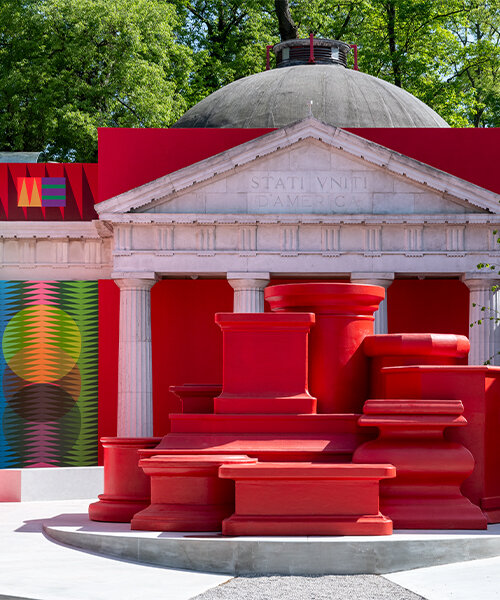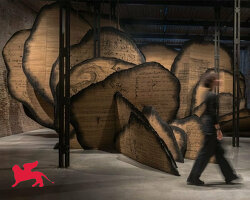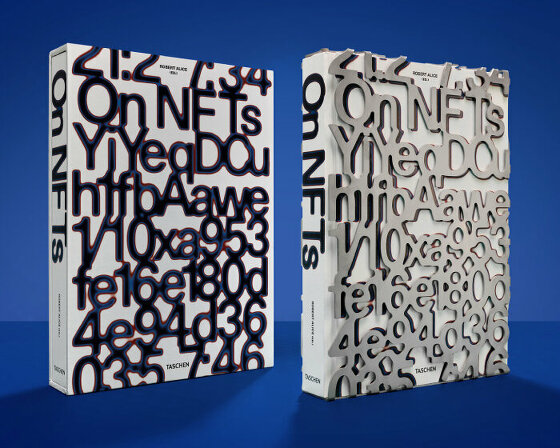US pavilion presents immersive exhibition by Jeffrey Gibson
The United States (US) Pavilion at the Venice Art Biennale presents a multidisciplinary exhibition by Jeffrey Gibson, an artist recognized for a hybrid visual language that employs abundant color, complex pattern, and text to articulate the confluence of American, Indigenous, and Queer histories and imagine new futures. Gibson’s exhibition, the space in which to place me, engages concepts that have shaped his practice over his 20-year career. Bringing together sculpture, multimedia paintings, paintings on paper, and video, the exhibition explores the dimensions of collective and individual identity and the forces that shape its perception across time. The exhibition is curated by Abigail Winograd and Ash-Milby, curator of Native American Art at the Portland Art Museum and a member of the Navajo Nation.
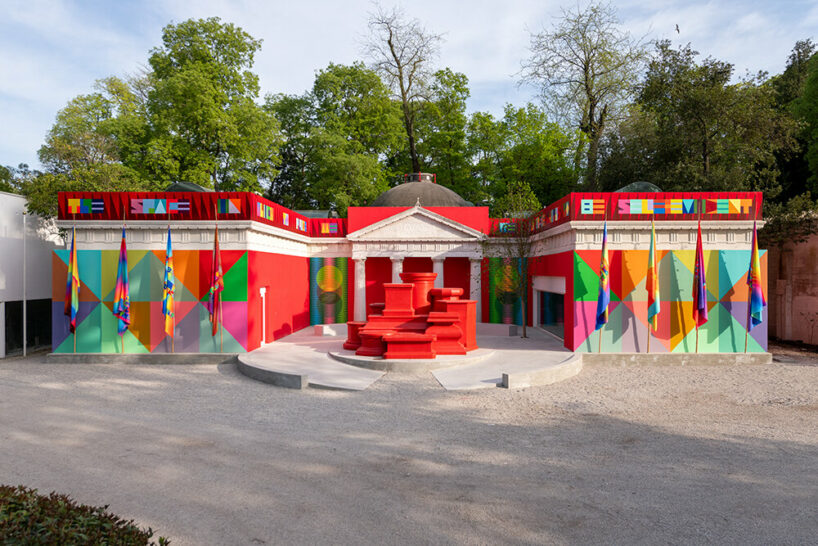
exterior view of the space in which to place me by Jeffrey Gibson for the US Pavilion
all images © Timothy Schenck
‘the space in which to place me’ explores Indigenous histories
the space in which to place me considers Indigenous histories within an American and international context, expanding upon the varied materials and forms that Gibson has employed over the past two decades. The title references Oglala Lakota poet Layli Long Soldier’s Ȟe Sápa, a poem whose geometric shape parallels Jeffrey Gibson’s meditation on the physicality of belonging. He often draws influence from poetry, literature, music, fashion, and theory, which materialize in his intuitive use of text. This long-held engagement continues throughout the exhibition. Gibson incorporates language from foundational American documents from the late 19th and early 20th centuries, including constitutional amendments, legislation, speeches, official correspondence, song lyrics, and musical references. Often pointing toward moments in history that were meant to spark change, his use of text encourages us to examine our past when considering the present.
‘Few artists working today are so expert in engaging our hearts and our collective conscience. Operating within and beyond the constructs of the contemporary canon, Jeffrey proposes alternate worlds that embrace our shared humanity and create space for joy while acknowledging hardship,’ shares Winograd.
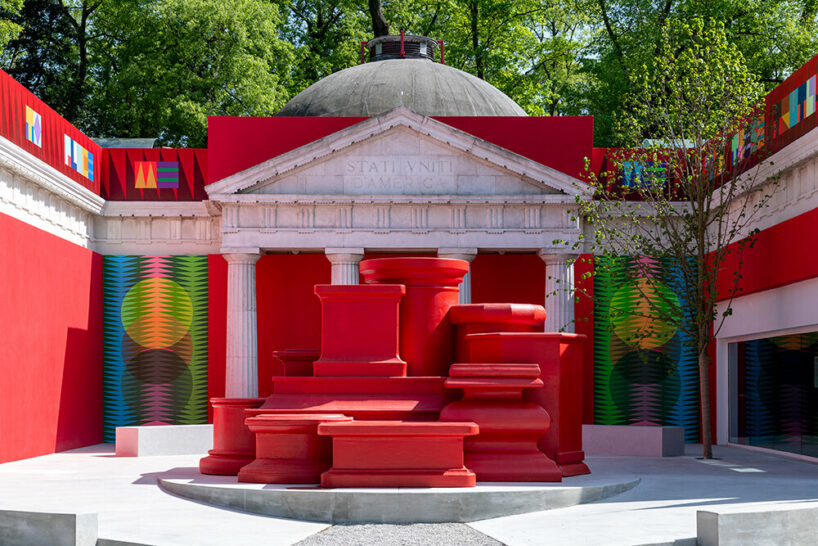
forecourt sculpture: the space in which to place me (2024)
a multidisciplinary experience
The exhibition at the US Pavilion begins in the forecourt with the titular work: a large-scale, site-specific sculpture that combines a series of classical bases in a multi-level platform painted in a singular, vibrant red. Encouraging public interaction, the installation offers a site for celebration, respite, and gathering. Beyond the forecourt, Gibson wraps the neoclassical building in hand-painted murals that explode with his signature expression of color, pattern, and text. Extending across the eastern and western facades of the building are two introductory phrases: the title of the exhibition on the left is joined on the right by ‘We hold these truths to be self-evident,’ an opening line from the United States Declaration of Independence, which preludes the artist‘s integration of foundational American documents throughout the exhibition.
Surrounding the exterior facade are eight flags, each mounted on twenty-foot-tall teepee poles and patterned in their design. Flags have been a part of Jeffrey Gibson’s practice since 2012, when he first built them from recycled army blankets and painted them directly on wool. Often a marker of territory or a signal of affiliation, these vibrant, geometric flags represent inclusivity, welcoming visitors to a space that acknowledges collective memory alongside individual experience.
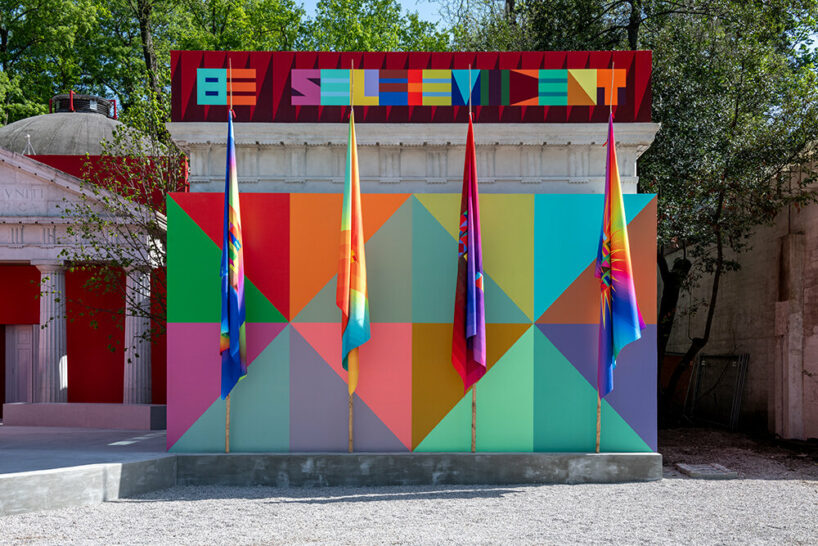
eight flags, each mounted on twenty-foot-tall teepee poles
Entering the Pavilion’s first gallery, visitors encounter two towering figures, The Enforcer (2024) and WE WANT TO BE FREE (2024). Standing approximately 10 feet high, the figures comprise beads, ribbon, fringe, and tin jingles—elements inspired by traditional Native regalia. Their heads, rendered imperfect and asymmetrical in glazed ceramic, reference Mississippian effigy pots, an ancient tradition from the American Southeast. Their bodies bear beaded text on each side: The Enforcer’s chest refers to the 13th, 14th, and 15th amendments to the U.S. Constitution, known as the ‘Reconstruction Amendments,’ which abolished slavery and intended to protect the civil rights of Black American citizens. Also referenced is the Enforcement Act of 1870, which established penalties for interfering with a person’s right to vote.
WE WANT TO BE FREE is emblazoned on the front of the adjoining figure, whose additional text refers to the Indian Citizenship Act of 1924, a law granting basic rights to Indigenous people within U.S. boundaries, and the Civil Rights Act of 1866, the first federal law to define citizenship and claim all citizens equal under the law. On a mural behind the figures are the words of Martin Luther King Jr.: ‘We are made by history,’ a phrase employed by King in 1954 to urge his congregation to take an active role in their futures and one that Gibson borrows here to emphasize how our past shapes our reality.
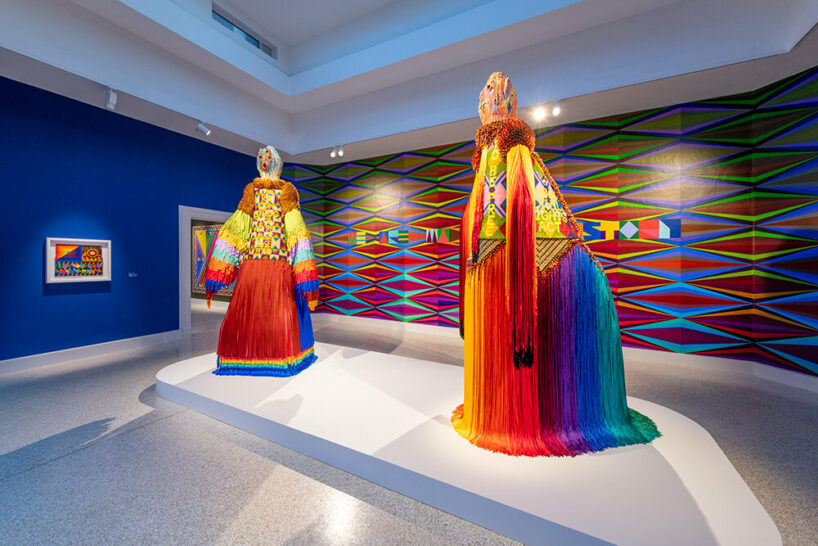
first gallery: two towering figures comprise beads, ribbon, fringe, and tin jingle
Gibson continues to approach these ideas in the next gallery, where two beaded bird sculptures, we are the witnesses (2024) and If there is no struggle there is no progress (2024), perch atop stone pedestals. A consistent motif in Gibson’s practice, the birds are partly inspired by ‘whimsies,’ Victorian-era Native-made objects, which were originally created to appeal to the taste and aesthetics of the period. Once viewed as kitsch, the objects fell outside of culturally specific definitions, which drew Gibson to them initially. More than just a source of inspiration, Native-made objects are integrated into the paintings on paper on view in the second and fourth galleries. Gibson sourced examples of traditional Native beadwork, which includes bags, belts, and medallions from websites and estate and garage sales. Applying them first to a felt base and then to painted cotton rag paper, the objects are attached to the surface of the paintings with care and kept intact in their original form.
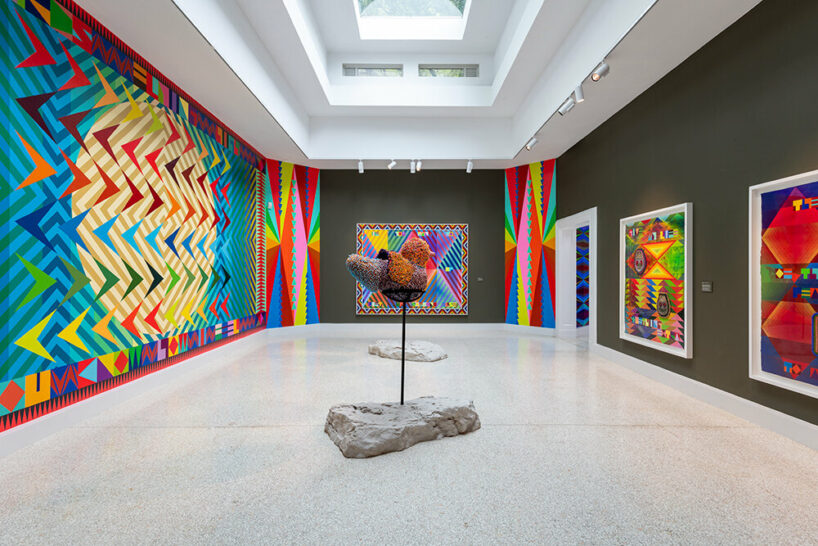
beaded bird sculpture
This construction method allows the objects whose makers are unknown to be easily removed if a viewer can identify the object and maker. If an object is claimed, Gibson has committed to returning the work and commissioning an Indigenous artist to create a replacement or to make one in his studio. The objects introduce a physical dimension to the kaleidoscopic works on paper, as seen in ACTION NOW ACTION IS ELOQUENCE (2024), which incorporates a vintage beaded belt that still holds the curved shape of its original wearer.Gibson has swathed the walls of the rotunda in a deep red, reimagining the space as the beating heart of the exhibition. At the center hangs one of the artist’s iconic punching bags, explicitly created for the U.S. Pavilion. Titled WE HOLD THESE TRUTHS TO BE SELF-EVIDENT (2024), the bag’s multi-colored fringe cascades in diagonal layers to the floor below. The beaded bag is precisely lit, while the rest of the room remains dim, creating a space for respite and reflection at the exhibition’s midpoint.
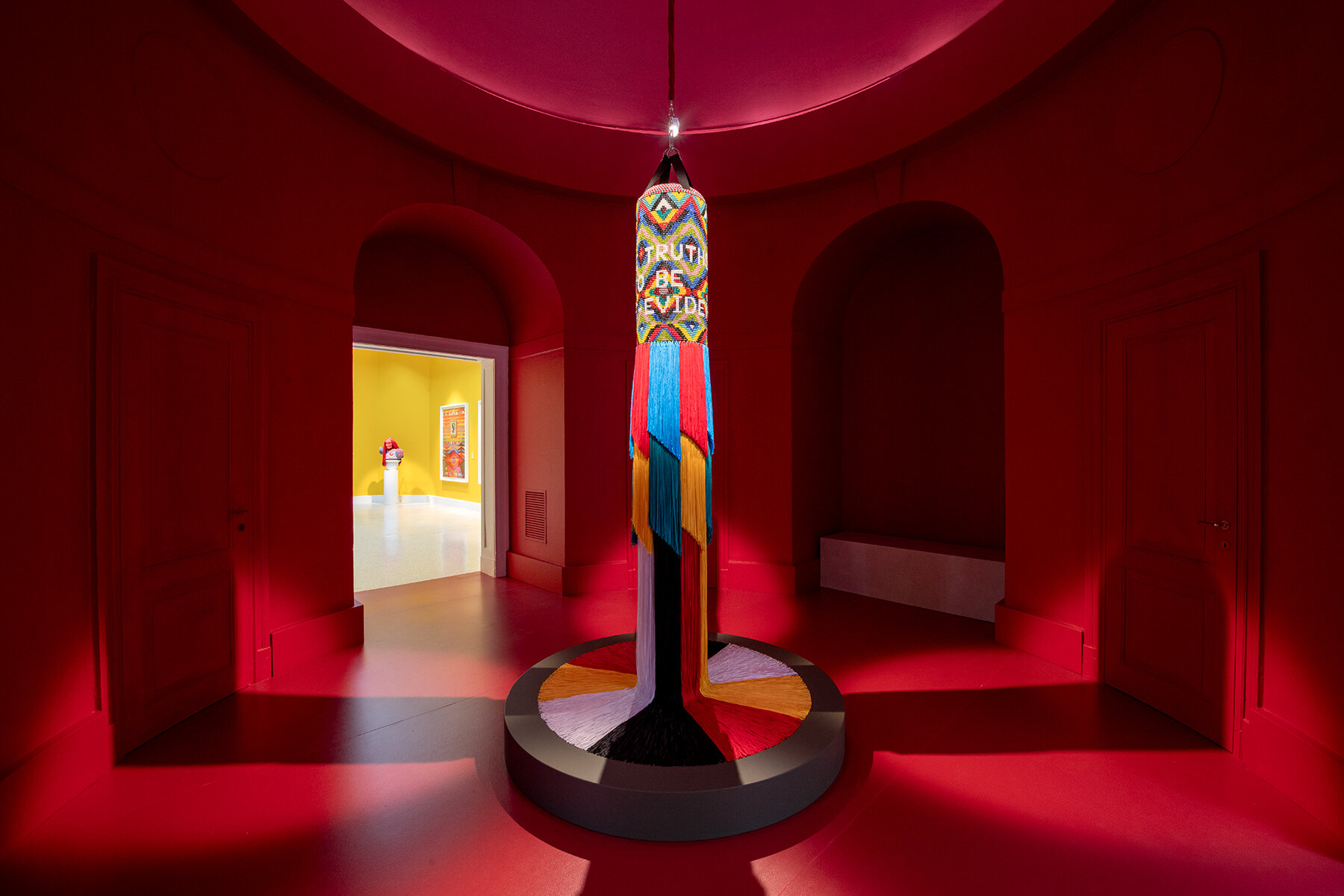
In the next gallery, Gibson’s enduring exploration of hybridity takes a new form with I’M A NATURAL MAN (2024), Be Some Body (2024), and Treat Me Right (2024), three busts elevated to eye level on marble bases. Like many of Gibson’s figures, they are intentionally indeterminate; their beaded skin and intricate hair cannot be ascribed to any one specific culture or aesthetic. The busts also blur the boundaries between historical eras—integrated among the swirling beads are vintage pinback buttons with the language of advocacy groups and organizers, such as the slogan ‘If we settle for what they’re giving us, we deserve what we get!’. Surrounding the busts are related works on paper and large-scale paintings, including THE RETURNED MALE STUDENT FAR TOO FREQUENTLY GOES BACK TO THE RESERVATION AND FALLS INTO THE OLD CUSTOM OF LETTING HIS HAIR GROW LONG (2024).
The work’s title and matching text draw from a 1902 letter from the Commissioner of Indian Affairs to the Superintendent of the school district of Round Valley, California, in which a directive is given for male Indians to cut their hair to ‘hasten their progress towards civilization.’ Positioned in front of these words are the three busts whose ribbon and beaded hair fall long past their faces, a refusal rendered in a defiant, electric color.
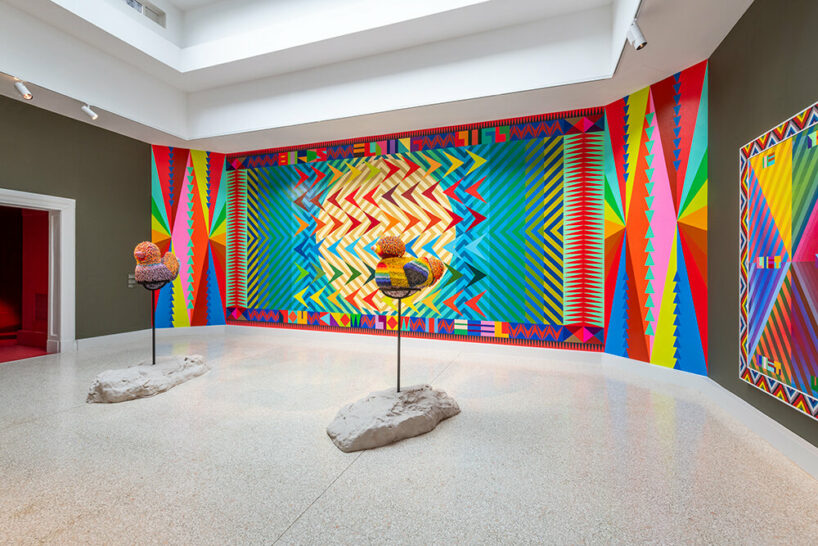
two beaded bird sculptures
In the final gallery of the exhibition, Gibson immerses viewers in a multi-channel video installation, She Never Dances Alone (2020), a work initially shown in New York’s Times Square. Here, the video is projected simultaneously across nine screens and features artist and dancer Sarah Ortegon HighWalking (enrolled Eastern Shoshone and Northern Arapaho) performing the Jingle Dress Dance, a powwow dance originating with the Ojibwe tribe. The centuries-old dance is traditionally performed by women to call upon ancestors for strength, protection, and healing. Dancing to the beats of First Nations electronic group The Halluci Nation, Ortegon HighWalking performs in a series of her dresses adorned with jingles or rows of ziibaaska’iganan (metal cones). As the dance progresses, her image multiplies within each screen and across the gallery, representing generations of Indigenous women and acknowledging their persistence for years to come.
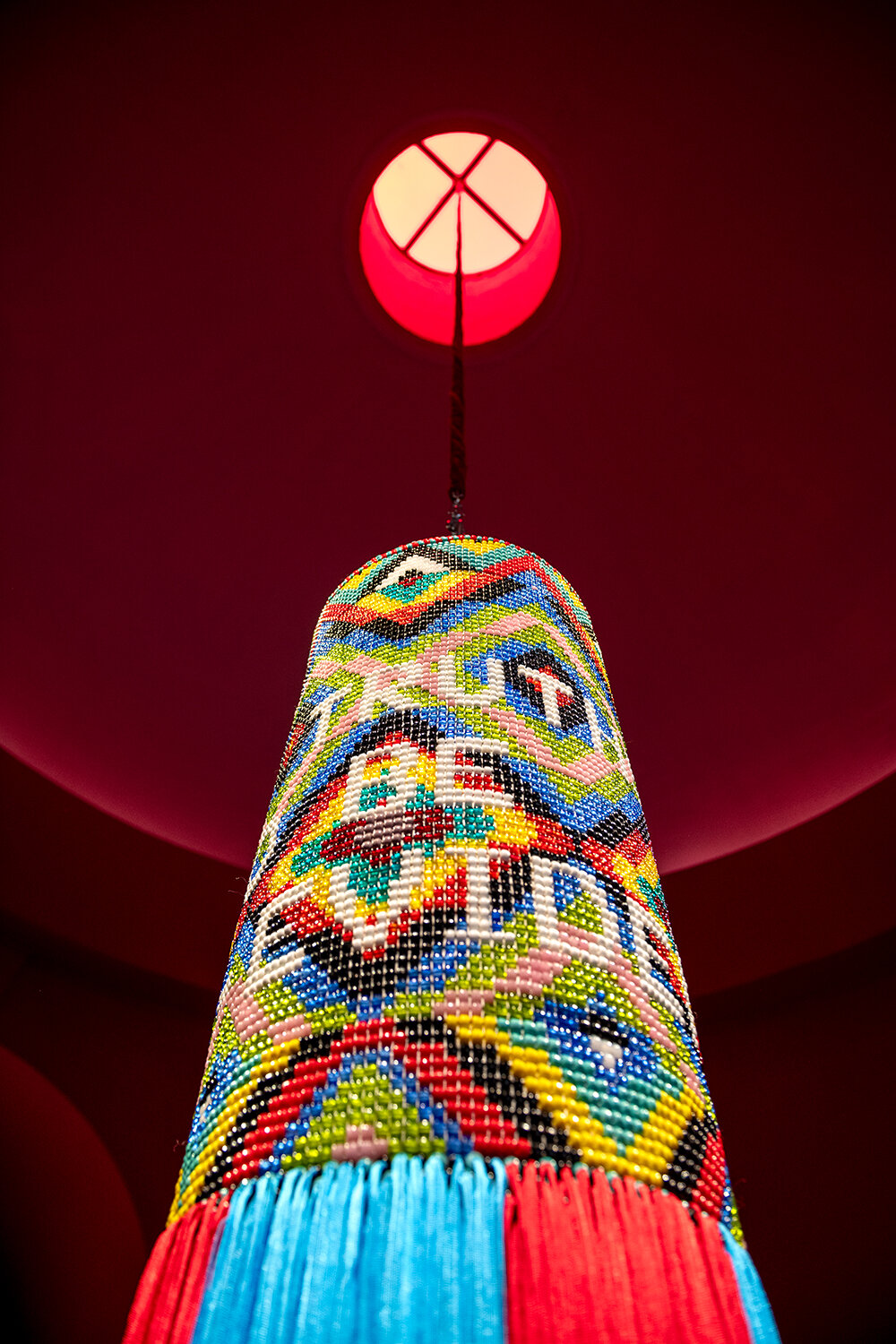
HOLD THESE TRUTHS TO BE SELF-EVIDENT (2024) by Jeffrey Gibson
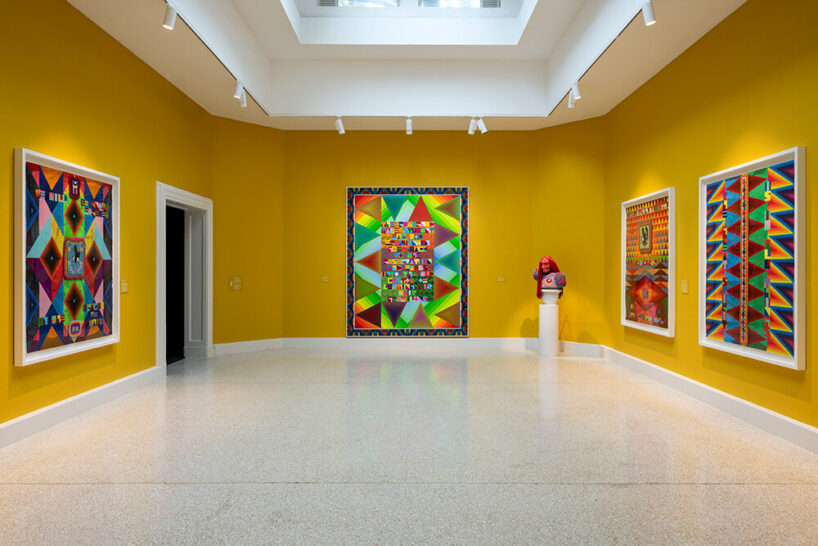
Jeffrey Gibson presents his work in a multidisciplinary exhibition
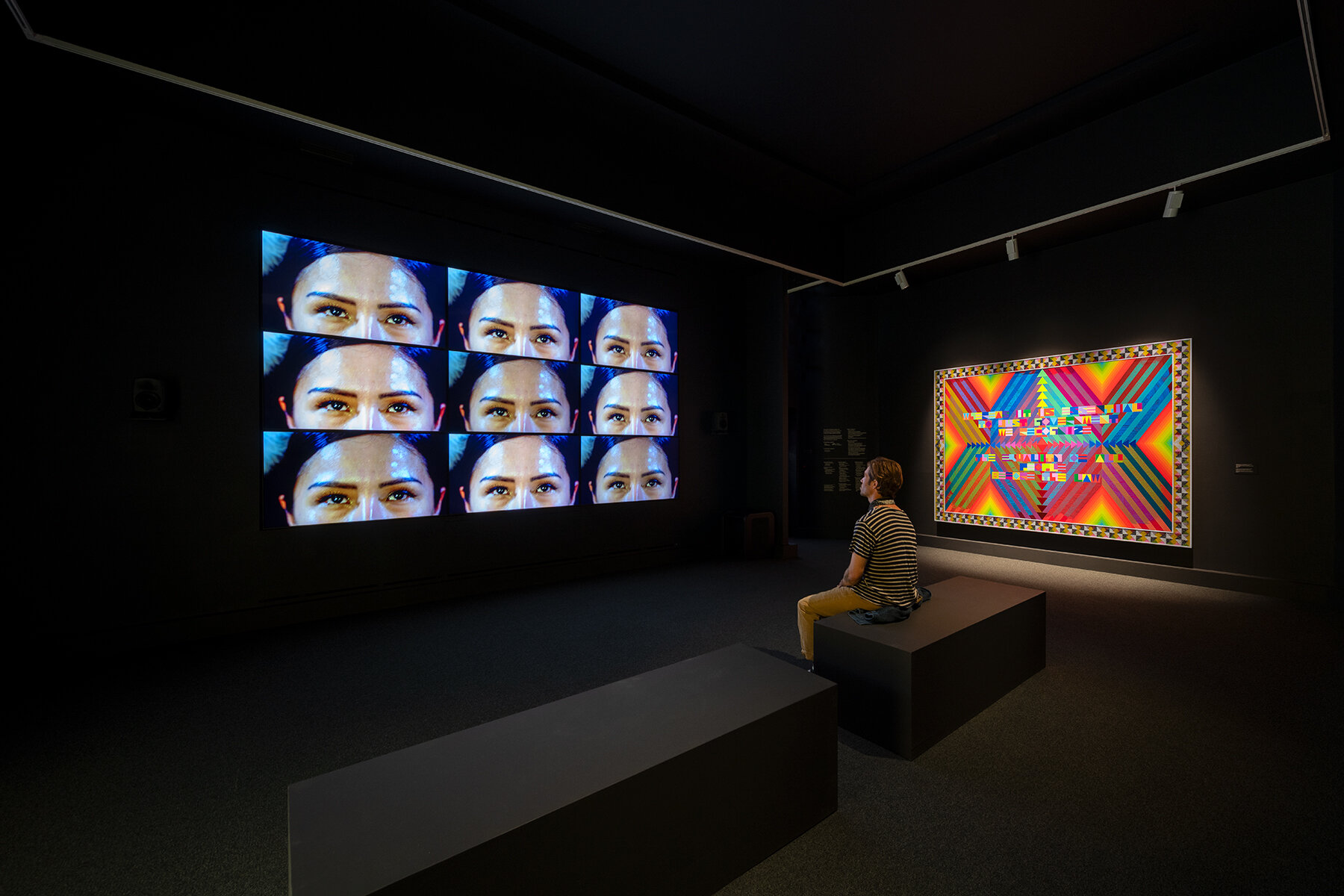
project info:
name: the space in which to place me
location: United States Pavilion, Giardini della Biennale, Venice
artist: Jeffrey Gibson | @jeffrune
presented by: Portland Art Museum and SITE Santa Fe
commissioners: Louis Grachos, Executive Director, SITE Santa Fe; Kathleen Ash-Milby, Curator of Native American Art, Portland Art Museum; Abigail Winograd, Independent Curator
curators: Kathleen Ash-Milby, Abigail Winograd
program: 60th International Art Exhibition of La Biennale di Venezia | @labiennale
viewing dates: April 20 – November 24, 2024
venice art biennale 2024 (13)
PRODUCT LIBRARY
a diverse digital database that acts as a valuable guide in gaining insight and information about a product directly from the manufacturer, and serves as a rich reference point in developing a project or scheme.
